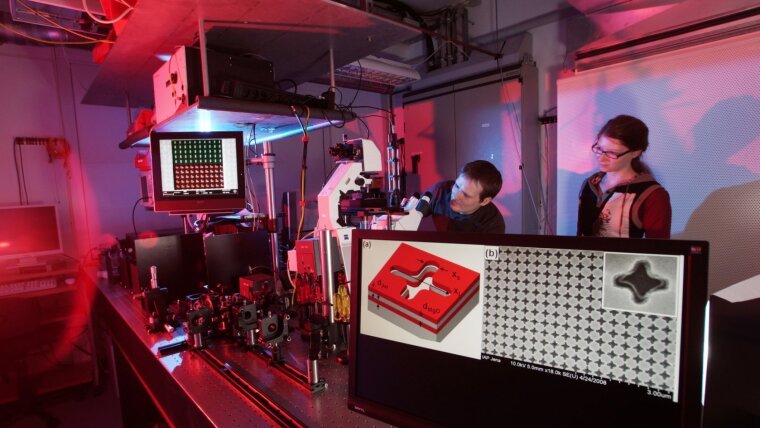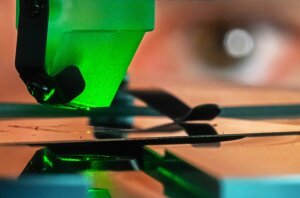
Thomas PERTSCH
Image: PrivateProf. Dr. Thomas PERTSCH
Email: thomas.pertsch@uni-jena.de
Phone: +49 3641-9-47560
Prof. Pertsch is a member of the board of directors of the Abbe Center of Photonics and the spokesman of the Abbe School of Photonics. He is a fellow of the Max Planck School of Photonics and associated investigator in the clusters of excellence “Balance of the Microverse” and “Transformative Meta-Optical Systems”. He serves in the board of directors of the Thuringian Innovation Center for Quantum Optics and Sensing and is the head of the Nano & Quantum Optics Group at the Institute of Applied Physics.
The Nano & Quantum Optics group targets to explore and understand the properties of nanoscale matter and their interaction with nontrivial photon states. The group's field is a rapidly developing research area that deals with the generation, propagation, manipulation, and detection of photons in nanostructures, with characteristic dimensions far below the scale of the wavelength of light. The generation, spread, and localization of photons and complex multiphoton states on such small length scales is a challenging topic, which the group explores by a broad range of methods. Hence, fundamental effects in nanostructured materials and quantum photonic systems are studied by a coherent approach of scientists in theory, technology, and experimental characterization directly within the group as well as by collaborating within multiple international networks.
Beside our strong commitment to explore the fascinating fields of nano and quantum optics, further research directions of the group address several other photonics-related topics. On the one hand, we study fundamental science phenomena such as linear and nonlinear properties of metamaterials, photonic crystals, optical microresonators, and spatio-temporal dynamics in discrete optical systems. On the other hand, we are strongly engaged in application-oriented research fields, where we investigate, e.g., innovative approaches in near-field microscopy, quantum imaging, nonlinear imaging and spectroscopic techniques for biological specimen, and photon management in solar cells.
Research Areas
Prof. Pertsch’s research targets the control of light at the nanoscale and at the quantum level using nanostructured materials and ultrafast nonlinear optical effects. Research interests include:
- Ultrafast light-matter interactions and optical quantum phenomena in nanostructured matter, as e.g. photonic nanomaterials, metamaterials, photonic crystals, and 2D semiconductors (TMDCs)
- Nonlinear spatio-temporal dynamics, plasmonics, near field optics, high-Q nonlinear optical microresonators, opto-optical processes in integrated optics, and alloptical signal processing
- Integrated quantum optics, quantum imaging, and quantum sensing
- Multi-tip scanning nearfield optical microscopy (SNOM) and photoemission electron microscopy (PEEM)
- Application of photonic nanostructures for multifunctional diffractive optical elements, for efficiency enhancement of photovoltaic elements, and for astronomical instruments
Teaching Fields
Prof. Pertsch’s teaching is devoted to the early involvement of young scientists in modern research topics. He gives Masterlevel courses in:
- Fundamentals of modern optics
- Computational methods in physics and photonics
- Introduction to nano optics
- Photonic quantum technology
- Innovation methods in photonics
Research Methods
The laboratory run by Prof. Pertsch offers a wide range of methods for the experimental characterization of photonic nanostructures, which include:
- Scanning nearfield optical microscopy (SNOM)
- High-resolution micro-spectroscopy (UV-VIS-IR)
- Time-resolved single photon detection and correlation
- Photoemission electron microscopy (PEEM)
- Ultrafast time-resolved characterization of nonlinear spatio-temporal dynamics

